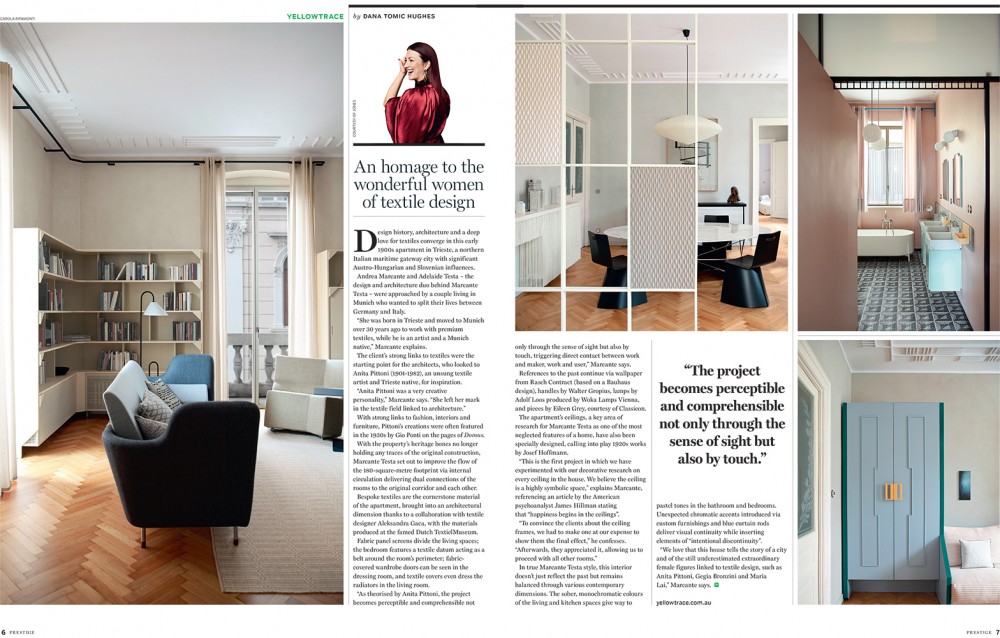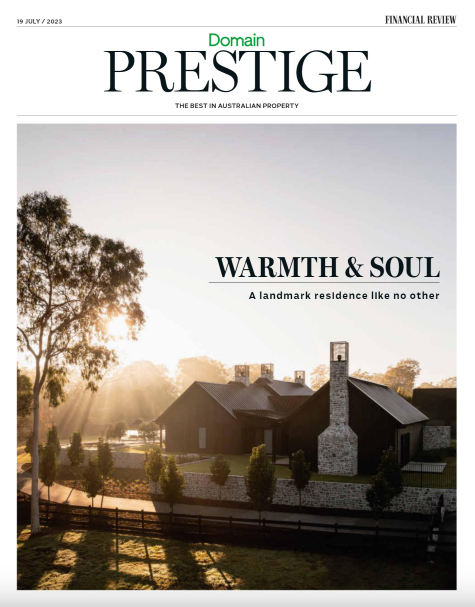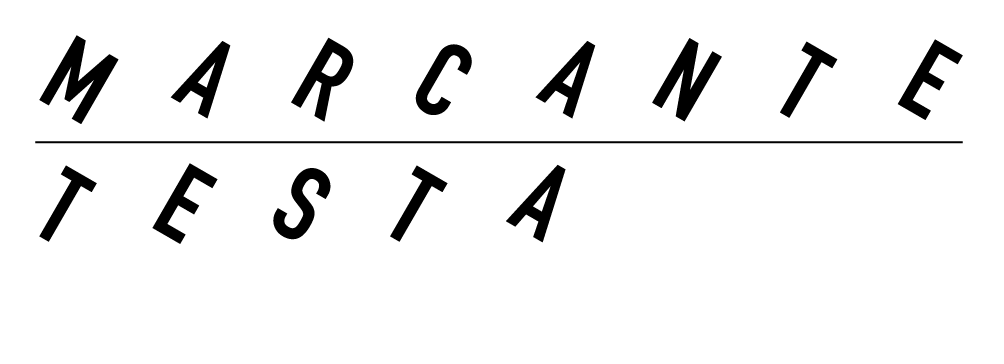“An homage to the wonderful women of textile design”
by DANA TOMIC HUGHES // YELLOWTRACE


Design history, architecture and a deep love for textiles converge in this early 1900s apartment in Trieste, a northern Italian maritime gateway city with significant Austro-Hungarian and Slovenian influences.
Andrea Marcante and Adelaide Testa – the design and architecture duo behind Marcante Testa – were approached by a couple living in Munich who wanted to split their lives between Germany and Italy. “She was born in Trieste and moved to Munich over 30 years ago to work with premium textiles, while he is an artist and a Munich native,” Marcante explains. The client’s strong links to textiles were the starting point for the architects, who looked to Anita Pittoni (1901-1982), an unsung textile artist and Trieste native, for inspiration. “Anita Pittoni was a very creative personality,” Marcante says. “She left her mark in the textile field linked to architecture.”
With strong links to fashion, interiors and furniture, Pittoni’s creations were often featured in the 1930s by Gio Ponti on the pages of Domus. With the property’s heritage bones no longer holding any traces of the original construction, Marcante Testa set out to improve the flow of the 180-square-metre footprint via internal circulation delivering dual connections of the rooms to the original corridor and each other. Bespoke textiles are the cornerstone material of the apartment, brought into an architectural dimension thanks to a collaboration with textile designer Aleksandra Gaca, with the materials produced at the famed Dutch TextielMuseum. Fabric panel screens divide the living spaces; the bedroom features a textile datum acting as a belt around the room’s perimeter; fabric covered wardrobe doors can be seen in the dressing room, and textile covers even dress the radiators in the living room. “As theorised by Anita Pittoni, the project becomes perceptible and comprehensible not only through the sense of sight but also by touch, triggering direct contact between work and maker, work and user,” Marcante says. References to the past continue via wallpaper from Rasch Contract (based on a Bauhaus design), handles by Walter Gropius, lamps by Adolf Loos produced by Woka Lamps Vienna, and pieces by Eileen Grey, courtesy of Classicon.
The apartment’s ceilings, a key area of research for Marcante Testa as one of the most neglected features of a home, have also been specially designed, calling into play 1920s works by Josef Hoffmann. “This is the first project in which we have experimented with our decorative research on every ceiling in the house. We believe the ceiling is a highly symbolic space,” explains Marcante, referencing an article by the American psychoanalyst James Hillman stating that “happiness begins in the ceilings”. “To convince the clients about the ceiling frames, we had to make one at our expense to show them the final effect,” he confesses. “Afterwards, they appreciated it, allowing us to proceed with all other rooms.”
In true Marcante Testa style, this interior doesn’t just reflect the past but remains balanced through various contemporary dimensions. The sober, monochromatic colours of the living and kitchen spaces give way to pastel tones in the bathroom and bedrooms. Unexpected chromatic accents introduced via custom furnishings and blue curtain rods deliver visual continuity while inserting elements of “intentional discontinuity”.
“We love that this house tells the story of a city and of the still underestimated extraordinary female figures linked to textile design, such as Anita Pittoni, Gegia Bronzini and Maria Lai,” Marcante says.


